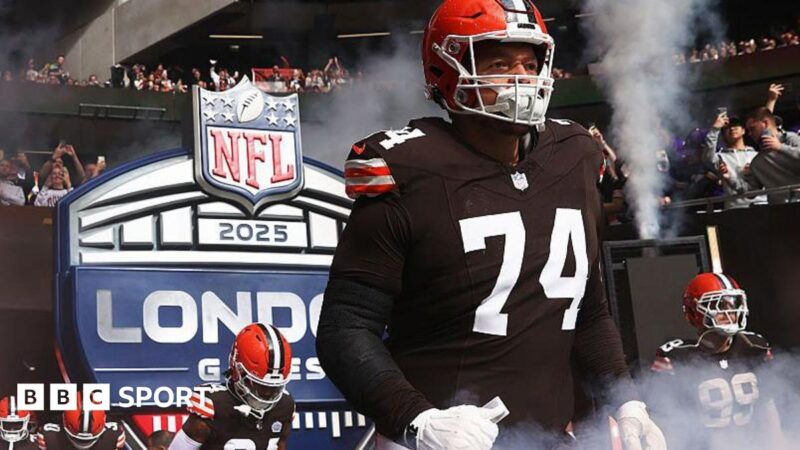Since 1990, the NBA has held 40 international games across four countries while MLB has staged 37 in five countries since 1996.
Both leagues have more scheduled over the next year and Leah MacNab, NBA head of international strategy and operations, says international games have “served as a catalyst for the continued growth of the game on a global basis”.
But the growth of the NBA and MLB has been dwarfed by that of the NFL. Sunday’s game at Wembley was the NFL’s 54th overseas game since its first in Mexico in 2005.
Although the number of global NFL fans has grown to 410 million, other sports have far more. It is just the NFL now has a business model that has proved extremely profitable.
The NFL’s shared income, which is distributed equally to its 32 teams, has increased from $8bn (£6bn) for 2010 to more than $23bn (£17bn) in 2024 – almost double the NBA and MLB, and triple the Premier League.
That rapid growth began about 2003, when the NFL put a long-term strategy in place, with competitive overseas games seen as the best way to grow American football globally.
London staged annual games from 2007 and the NFL only expanded its international series when it was confident the matches would continue to sell out.
The league initially met opposition from teams because they did not want to sacrifice a home fixture, and from players because of the travel. That began to change as teams saw how popular the games were and because they were made to feel at home.
Henry Hodgson, general manager of NFL UK and Ireland, told BBC Sport the league made it clear teams “had to have a seamless, exceptional experience when they played overseas”.
And international games have been held in some of the world’s most iconic, state-of-the-art stadiums, such as Wembley and Tottenham Hotspur Stadium, with more to follow.








